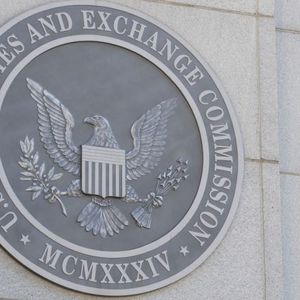Michael Saylor’s Strategy, formerly known as MicroStrategy, is facing one of its biggest tests yet has tumbled by more than 55% since the year started in the stock market, per data from Google Finance. With 499,096 BTC sitting on its balance sheet—worth about $44 billion—many are asking one question: Will Strategy be forced to liquidate its Bitcoin? At press time, Bitcoin has slipped far below Strategy’s average purchase price of $66,350 per BTC, meaning the company is now staring at billions in unrealized losses. If the downturn continues, it’d put Strategy’s entire financial structure at risk. This is the first real test of Strategy’s model since it became a Bitcoin-first company in 2020. How much trouble is Strategy really in? Strategy has built its entire business model around Bitcoin accumulation, funding purchases with a mix of debt and equity raises. The company holds $8.2 billion in debt, against its $44 billion Bitcoin holdings—a leverage ratio of about 19%. Most of this debt is tied up in convertible notes, financial instruments that allow creditors to convert their loans into $MSTR shares if the stock trades above a certain price. Just about the only way a “forced liquidation” occurs if there is a “fundamental change” at the company. Asked about the risks of forced selling, Saylor dismissed the idea outright. “Even if Bitcoin went to $1, we would not be liquidated,” he said. “We would just buy all of the Bitcoin.” That might sound confident, but according to data from EpochVC, a forced liquidation could happen under one key condition: a “fundamental change” in the company’s structure, which would need a stockholder vote or a corporate bankruptcy. Per its own bylaws, both of these options will likely force Strategy to sell off its Bitcoin reserves. While bankruptcy might seem unlikely, Strategy’s biggest risk is in 2027 and beyond when the first batch of convertible notes matures. Goldman Sachs analysts said in a note on Tuesday that if Bitcoin prices crash by 50% more and remains consolidated, creditors could refuse to roll over debt, leaving Strategy scrambling for cash. Saylor holds 46.8% of the voting power, which gives him a ton of control over any liquidation decisions. In spite of Saylor, shareholders now face a choice. Do they keep betting on Michael’s vision, doubling down on $MSTR despite its losses? Or do they walk away, forcing the company into a financial corner? At press time, Bitcoin was worth $88,756, according to data from CoinGecko. Saylor has been urging the US government to stockpile Bitcoin, arguing that owning 4 to 6 million BTC could “pay off the entire national debt.” Speaking at the annual CPAC conference, Saylor said the US could acquire 20% of Bitcoin’s supply “for free” and that doing so would strengthen the US dollar. He warned that other nations might act first, stating: “There’s only room for one nation-state to buy up 20% of the network. You wouldn’t want the Saudis buying it first, or the Russians, or the Chinese, or the Europeans.” States push for Bitcoin reserves, Trump already exploring federal option Saylor’s comments come as several US states move closer to mandating their own Bitcoin reserves. Most recently, Utah’s Senate Revenue and Taxation Committee gave a favorable recommendation to a bill that would require the state to hold Bitcoin as part of its reserves. At the federal level, Donald Trump last month signed an executive order creating a working group to explore the idea of a US Bitcoin reserve. Saylor claimed that if the federal government wanted to, it could rapidly accumulate 20% of Bitcoin’s total supply, with his comment about buying it “for free” seemingly referencing the US Treasury’s ability to print dollars indefinitely. The US already holds Bitcoin, but far less than Saylor proposes Right now, the US government owns around 183,422 BTC—just under 1% of Bitcoin’s total supply. By comparison, the British government holds 61,245 BTC, while Germany liquidated roughly $2.8 billion in BTC last year. Saylor has pushed this strategy before. In December, he presented a similar Bitcoin reserve plan to Microsoft’s board of directors, claiming the tech giant could generate $5 trillion in shareholder value by 2034 if it started accumulating BTC. So far, neither Microsoft nor any other major tech company has taken his advice. Not everyone agrees with Saylor’s vision. MIT Cryptoeconomics Lab founder Christian Catalini argued in a blog post this week that Bitcoin does not meet the criteria for a reserve asset. “Strategic reserves are meant to ensure stability and provide immediate access during a crisis,” Catalini wrote. “Countries store dollars or oil because they need them to repay debts, settle cross-border obligations, and keep essential systems running when supply chains falter.” He also suggested that buying Bitcoin on a massive scale could weaken the dollar’s global dominance. “If the US began amassing Bitcoin, it might be seen as a hedge against the dollar itself—raising alarms and giving rivals like China or Russia an opening to claim that the US no longer trusts its own currency,” he warned. While some lawmakers are pushing the idea of a Bitcoin reserve, skepticism remains about whether the US government will ever take action on Saylor’s plan. Cryptopolitan Academy: Want to grow your money in 2025? Learn how to do it with DeFi in our upcoming webclass. Save Your Spot


















